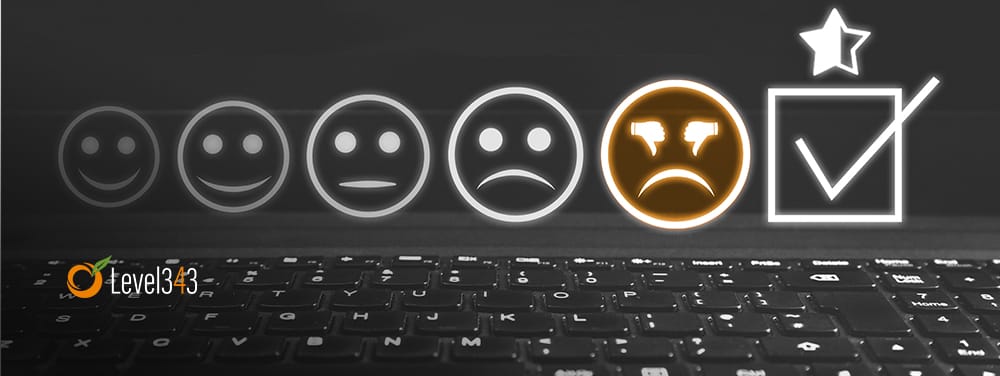Where there is good, there is bad, and the same is true in the world of digital marketing. If you’re not new in the SEO realm, you probably know how much the industry has changed over the years, making it increasingly difficult to rank high on Google. Because of this, many have decided to cheat the system by doing unscrupulous things that hurt other websites. Luckily, you are not entirely helpless when it comes to shielding yourself from these tactics. By staying on top of things, you can gain control and protect your website from negative SEO.
What is negative SEO?
To be able to protect yourself from something, you have to know what you are fighting against. Therefore, before we dive into the details, let’s clarify what negative SEO is.
To put it simply, negative SEO is the polar opposite of SEO. While SEO is supposed to help you rank higher on Google, its evil brother aims to annul all your hard work. Here are a few examples of negative SEO:
- sabotaging your website,
- building spammy links to your website,
- removing your best backlinks,
- duplicating your content,
- creating fake social media profiles,
- faking negative reviews.
What can you do to protect your website from negative SEO?
Whether you’ve been a victim of negative SEO attacks or not, the thought of this happening to your website probably sends chills down your spine. Considering how challenging it has become to achieve a high SERP ranking, it’s easy to understand why the corruption of your efforts by malicious competitors would be anxiety-inducing. However, there is no need to fret as there are things you can do to protect your website from negative SEO.
Set up Google Search Console alerts
If you own a website, using Google Search Console is a must. This nifty little tool can help you track and solve all SEO-related issues without much effort. With it, you can analyze search traffic, check whether your pages are indexed or if Google has penalized you. Google Search Console can also provide safety for your website by alerting you when suspicious activity is happening.
To connect your website to Google Search Console and activate alerts, you need to log into your account and click on Preferences. From there, you only need to enable email notifications. Considering how simple (and free) this tool is, there is no reason not to utilize it to your advantage.
Monitor your website speed
Your website’s speed is an essential factor in ranking. If the loading speed suddenly plummets without a logical explanation, you have likely become a victim of forceful crawling. This means that spammers have intentionally overloaded your server, making it highly sluggish or even impossible to load. As a result of this negative SEO tactic, you can lose your rankings on Google.
You can keep an eye on your website speed by using crawling software. If you notice your website is lagging and causing high bounce rates, make sure to contact your webmaster or hosting provider to determine why this is happening.
Keep an eye on your backlinks profile
If we take into account the importance of link building for search engine optimization, it should be easy to understand why negative SEO practitioners like to mess with backlinks. Here are two standard ways they do this:
- building low-quality, spammy links;
- removing your best backlinks.
Many tools can help you monitor your backlinks profile and stay on top of any changes. Ahrefs, Ubersuggest, and Linkody are just a few of them. By tracking your backlinks with these tools, you will notice any suspicious links before it is too late to do something.
When it comes to removing your best backlinks, spammers will try to contact website owners pretending to be you and ask them to remove your links. To prevent this from happening, you should always use an email address from your domain for business communication. Additionally, you will want to keep track of your best backlinks and regularly check whether they are still where they should be.
Watch out for duplicate content
Another common negative SEO tactic you need to protect your website from is duplicate content. By copying your content and posting it on endless amounts of other websites, spammers can hurt you. While you may not be directly penalized, those results can rank before you – pushing you down the SERPs into obscurity.
An easy way to combat copycats is to use plagiarism tools such as Copyscape and Grammarly to check whether your content has been posted anywhere without your knowledge and permission.
Monitor your social media
You can probably tell by now that spammers are ready to do whatever it takes to ruin your reputation. With that said, you shouldn’t be surprised if you notice fake social media profiles popping up in your name.
If you notice them, make sure to report them as soon as possible. Additionally, it would be smart to monitor your social media mentions and citations regularly. For this, you can use tools such as Hootsuite, Zoho Social, Mention, and many others, depending on which social media platform you use.
Pay attention to negative reviews on Google My Business
If you are a local business owner, you probably understand how critical your Google My Business profile is. This is usually the first thing your potential clients and customers see when they type in your business’s name on Google. And because first impressions are essential in the digital world, you want to make sure your GMB profile is presentable.
If you notice a sudden surge of negative reviews that don’t seem genuine, know that you have become a target of negative SEO practices. To protect your website from negative SEO and prevent your reputation from going down the drain, make sure to flag and report fake reviews. However, if the negative reviews are not fake, put your ego aside and improve whatever the person is complaining about.






































